
|
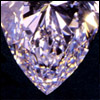
|
The Occurrence and Origin of Diamonds
By Edgar George Pye
Diamonds are the most beautiful, most brilliant, hardest, and most-desired of all gem minerals. The word "diamond" conjures up different things depending on one's interests and point of view. But what is diamond? Where is it found? How does it occur in the natural environment and how was it formed? This article attempts to answer these and other questions for the curious individual whose familiarity with the gem is limited to the engagement ring and other jewellery.
 Read Article | 560 kb
Read Article | 560 kb
|
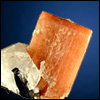
|
Canada's Top Ten Minerals
By Charles A. Gould, Tim Jokela Jr., David K. Joyce, and Dirk F. Schmid
Canada is one of the world's top producers of fine mineral specimens. It has many localities that produce high quality minerals. With such a vast range of species and mineralogical occurrences to choose from, it becomes a formidable challenge to select the top Canadian minerals. Our top ten choices are presented here.
 Read Article | 642 kb
Read Article | 642 kb
|
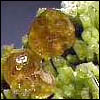
|
Hessonite Garnets and Other Fine Minerals from the Jeffrey Mine, Québec
By Sylvain Roy
The Jeffrey Mine at Asbestos, Québec, Canada has been in operation for more than a century. It is known to collectors for having produced exceptional mineral specimens. Prized by collectors are the famous gemmy hessonite garnets, vesuvianites, diopsides and prehnites. Presented here is a brief history of the mine and photographic examples of beautiful aesthetic hessonites recently found at the mine.
 Read Article | 185 kb
Read Article | 185 kb
|
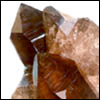
|
The Minerals of Monte Bianco
By Marco Macchieraldo
The Monte Bianco (Mont Blanc) region is a rugged massif in the western Alps situated on the borders of France, Italy and Switzerland. This massif has produced exceptional specimens highly prized by collectors around the world. But the sovereign minerals of Monte Bianco are quartz and fluorite, of which several rare and unusual varities have been found, including red fluorite, Gwindel quartz and black Morion quartz.
 Read Article | 355 kb
Read Article | 355 kb
|
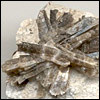
|
Borates and other Minerals from the Evaporates of Nova Scotia
By Ronnie Van Dommelen
Some 350-335 million years ago, Nova Scotia lay near the equator and much of the province was covered by a sea. The climate was very hot and dry, leading to evaporation of the inland sea. Today we see evidence of this sea in the extensive deposits of limestone, gypsum/anhydrite and salt deposits found in the province.
 Read Article | 138 kb
Read Article | 138 kb
|
 Top of Page
Top of Page
|




|

Editorial
By D.F. Schmid
Occurrence and Origin of Diamonds
By E.G. Pye
Canada's Top Ten Minerals
By C. Gould, T. Jokela, D. Joyce and D.F. Schmid
Hessonite Garnets
from the Jeffrey Mine, Québec
By S. Roy
The Minerals of
Monte Bianco
By M. Macchieraldo
Borates and
other Minerals from Nova Scotia
By R. Van Dommelen

Back Issues
Junior Rockhound
Books
Dealers & Suppliers
Web Links

Did you like this issue? We are happy to receive feedback from fellow readers.
E-mail

A Word from the Editor
Masthead Cover Photo:
Photo of rugged peaks of the Monte Bianco massif straddling the border between France, Italy and Switzerland. To the right is a photo of smoky quartz found at upper elevations of the massif. Photos by Marco Macchieraldo, Italy.
|



